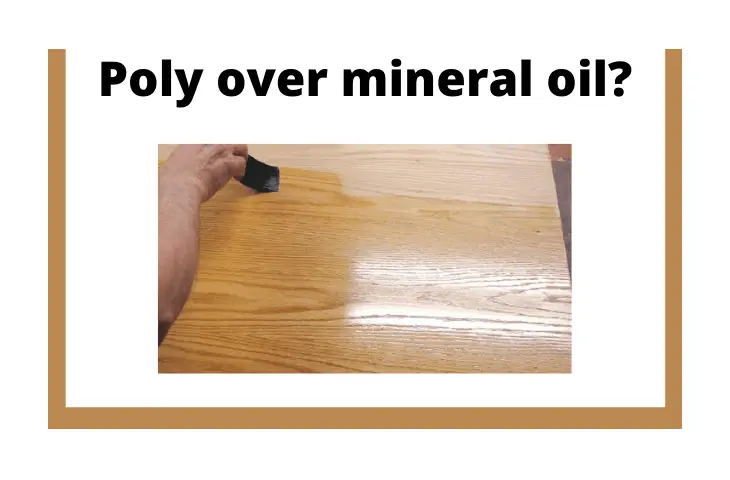Mineral oils on wood penetrate and highlight the wood grain in a way that straight poly finish cant. For this reason, you may want to apply mineral oil to your wood. However, mineral oil alone isn’t enough to protect the wood. That’s where a film-forming finish like poly comes in. But can you put polyurethane over mineral oils without running into adhesion problems?
The short answer is yes! You can apply polyurethane over a piece of furniture that is oiled. However, the process is not as easy and without following the recommended procedure you might run into adhesion problems with your poly.
Let’s find out the correct way to polyurethane an oiled wooden surface.
Applying poly over mineral oil
Many people going for this combo hoping to make their wood have depth and a rich natural color fail due to poor adhesion problems, especially with the poly. In this article, we will go through some methods that we have identified as perfectly workable when adding poly over oiled wood.
Tackling adhesion problem
The most common source of this problem is usually the drying time of the oil. Before you can apply your poly, the oils need to be dry.
Bob Flexner, a wood finishing expert we trust here at improvewood, advises that you let the oil dry to the touch for at least three days or more if needed before applying your coat of poly.
The oil soaks into the wood grain, and the excess is wiped off, but even then, the oils are yet to dry. Letting the oils dry will leave the wood as bare as if no oil was applied in the first place.
Sanding before and after poly.
I know sanding is not the most interesting chore for a woodworker. Yet sanding is the solution to many woodworking challenges, including adhesion.
After letting the oil dry for a couple of days, it’s good to give the wood surface a light sanding. This sanding takes care of any blemishes that may be present on the surface.
Sanding will also etch the wood, preparing it to bond with the poly. Any subsequent layers of poly should also be sanded in between layers.
Poly is not self-leveling, and though careful application with a brush can avoid marks, sanding is still encouraged to enhance bonding between layers.
Below is a video on how you can apply wipe on poly to an oiled turning.
Did you know that you can use an airless sprayer to apply polyurethane quickly?
Wrapping up on applying polyurethane over mineral oil
In summation, it is possible to use poly over oiled wood. But adhesion problems are only possible when the oil has completely dried. Sanding will also help the poly stick to the wood better. If more layers of poly are needed sanding between layers is also a good practice that ensures an immaculate appearance.


Thank you for your comment. You are correct that mineral oil never fully dries and should not be confused with polymerizing oils such as linseed and tung oils, which can dry and harden over time. We apologize for any confusion that may have arisen from our article.
However, our article was referring to the process of applying polyurethane over mineral oil, which is indeed possible with the proper preparation. Our recommended process involves letting the mineral oil dry for at least three days or more, lightly sanding the surface, and sanding between layers of polyurethane to enhance bonding.
We appreciate your input and hope this helps clarify any confusion.